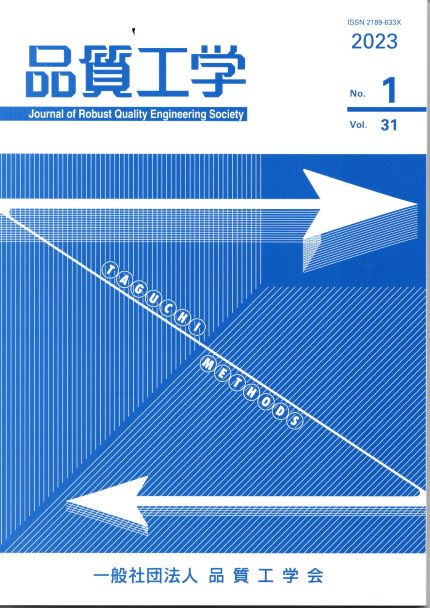All issues

Volume 31 (2023)
- Issue 4 Pages 4-
- Issue 3 Pages 5-
- Issue 2 Pages 4-
- Issue 1 Pages 4-
Volume 31, Issue 1
Displaying 1-5 of 5 articles from this issue
- |<
- <
- 1
- >
- >|
-
─ Summary of the Activities of the Vision 30 Long-term Plan for Envisioning Vision 35 and Future Tasks ─Masataka Yoshizawa2023 Volume 31 Issue 1 Pages 4-12
Published: January 01, 2023
Released on J-STAGE: January 01, 2024
JOURNAL FREE ACCESSDownload PDF (2599K)
-
Judging and Awards Committee2023 Volume 31 Issue 1 Pages 13-20
Published: January 01, 2023
Released on J-STAGE: January 01, 2024
JOURNAL FREE ACCESSDownload PDF (378K) -
editorial committee2023 Volume 31 Issue 1 Pages 21-30
Published: January 01, 2023
Released on J-STAGE: January 01, 2024
JOURNAL FREE ACCESSDownload PDF (435K)
-
Yuji Kado, Takafumi Nakagawa2023 Volume 31 Issue 1 Pages 31-42
Published: January 01, 2023
Released on J-STAGE: January 01, 2024
JOURNAL FREE ACCESSRecently nonlinear simulation has been introduced into, for example, fluid analysis carried out for the design and development of spacecraft, leading to studies of the computation of robust design solutions that can withstand external disturbances. As the technology becomes more advanced and specialized, however, organizations have become more siloed, making it difficult to share information with designers in other fields. As a basis for considering parameter design, the present study describes the computation of ranges of parameter values satisfying multiple restrictions. One feature of these effective parameter ranges is that they enable multiple results to be evaluated together; another feature is that it becomes easier to share the results with other designers. To verify the effectiveness of this method, it was applied to a seismic simulation of timber structures to compute parameter ranges that would avoid collapse in a major seismic event and avoid damage in a moderate seismic event. A multilevel orthogonal array was used to improve the reproducibility of the results of the study, and a supercomputer was used to shorten the computation time. Reproducibility was studied using the shape retention method of quality engineering, and found to be high.View full abstractDownload PDF (14180K) -
─ Comparison of Computer Mouse Operability by the MT Method ─Hidenori Ue, Shion Watanabe2023 Volume 31 Issue 1 Pages 43-49
Published: January 01, 2023
Released on J-STAGE: January 01, 2024
JOURNAL FREE ACCESSThis report concerns the development of a technique for quantitative evaluation of the ease of use experienced by users of a product. In this technique a total of 55 features per second were derived from electrocardiogram and brainwave frequency spectra and their Mahalanobis distance(MD)was calculated by the Mahalanobis-Taguchi(MT)method. The unit space on which the quantification was based was the feature pattern in the resting state; the difference between this pattern and the patterns obtained while the product was being used was quantified by their MD. This method was tested on five subjects who used a computer mouse to click on a target on a screen. MDs were calculated for varying mouse speeds and target sizes. The MD values for four of the subjects tended to match the ease of use they reported. The MD values for another one subject reflected effects of the subject’s initial unfamiliarity with the experiment.View full abstractDownload PDF (21355K)
- |<
- <
- 1
- >
- >|